ARB301 Project Thesis Dossier The Hotel Family Segment Felix Verheyden (BE) The Berlage Center for Advanced Studies in Architecture and Urban Design
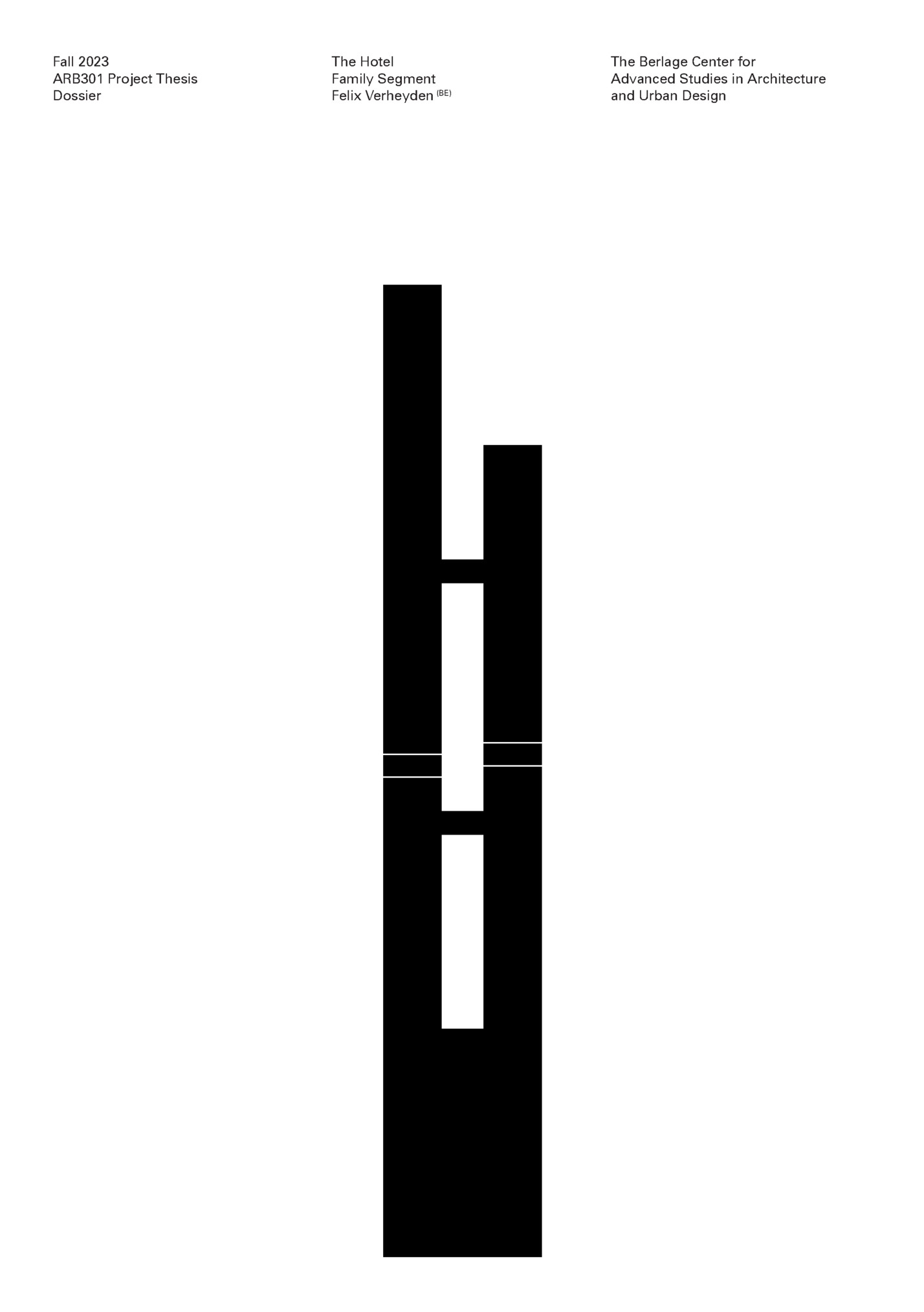
5 Collective project abstract and propositions 7 About the site and type Hotel Pennsylvania Pennsylvania Station Hotel building type Expert conversations 39 About The Hotel Hotel ownership Operational diagram Hotel segments Programmatic description Site information Building information 51 About The Metropolitan Core and structure Elevators Elevations 63 About One Hotel Sections Accommodations Amenities Services Systems Afterlife 99 Individual contribution Contribution abstract Contribution propositions Hotel segment drawing set Precedent studies and references 3

propositions The Hotel is a collective project that studies the hotel, both as a building type and as a place of hospitality, through a collection of fourteen individual contributions inside one skyscraper. The project imagines hospitality as a realm of exchange that condenses the diversity of the city through an assortment of guests, staff, and the broader public. The hotel is a function of temporality and hospitality. The study questions the requirements for an architecture of hospitality to welcome, host, and entertain. As an architecture of temporality—an architecture that is dynamic and ever-changing, embodying a sense of transience and constant activity—the hotel allows for experimentation, while anticipating adaptation to meet the changing demands of its temporary residents. The hotel, as type, is understood beyond its curated front. It is, instead, a place of anonymity and exchange, of served and serving, a place characterized by short stays in a lasting structure. The skyscraper, as a formal and monumental object, appears to contrast the hotel’s temporality. In its autonomy, the skyscraper is a landmark in the skyline. Located in Midtown Manhattan—on the former site of Hotel Pennsylvania and adjacent to Penn Station—this project is a reflection on the metropolis of New York City. The Hotel consists of the design of the skyscraper as landmark—The Metropolitan—and the hotel as tenant—One Hotel. 1. The Hotel embraces the frenetic energy of New York City while opposing its outward expansion. 2. The Metropolitan will outlast One Hotel. 3. One Hotel accommodates fourteen types of guests, and its staff. 4. One Hotel shares accommodation, amenities, systems, and services with a 24/7 cycle. 5. The Hotel sets a standard for an architecture of hospitality. 4 5

6 7

14 33rd Street 11 8 6 7th Avenue 13 1 3 4 5 15 16 7 9 12 14 10 2 32nd Street N Hotel Pennsylvania N Hotel Pennsylvania Ground Floor 6 nd St re et 13 32 1919, Hotel Pennsylvania Number of rooms: 1850 Number of floors: 22 h 7t e u en Av Typical Accommodation Floor Hotel Pennsylvania Hotel Pennsylvania was designed by the renowned firm of McKim, Mead & White. Consisting of 2,200 guest rooms over twenty-two floors, it was the largest hotel in the world at the time. Facing Seventh Avenue—and Pennsylvania Station—a portico greeted guests and led into the building through a sequence of spaces culminating in the hotel’s lobby. 8 8 0 1. Main entrance 2. Secondary entrances 3. Entrance vestibule 4. Lobby 5. Palm room 6. Guest elevators 5 7. Office 8. Soda room 9. Mens’ café 10. Shop 11. Drug store 12. Dining room 13. Service elevators 10 20 m 14. Subway entrance 15. Pantry 16. Service driveway 9 9
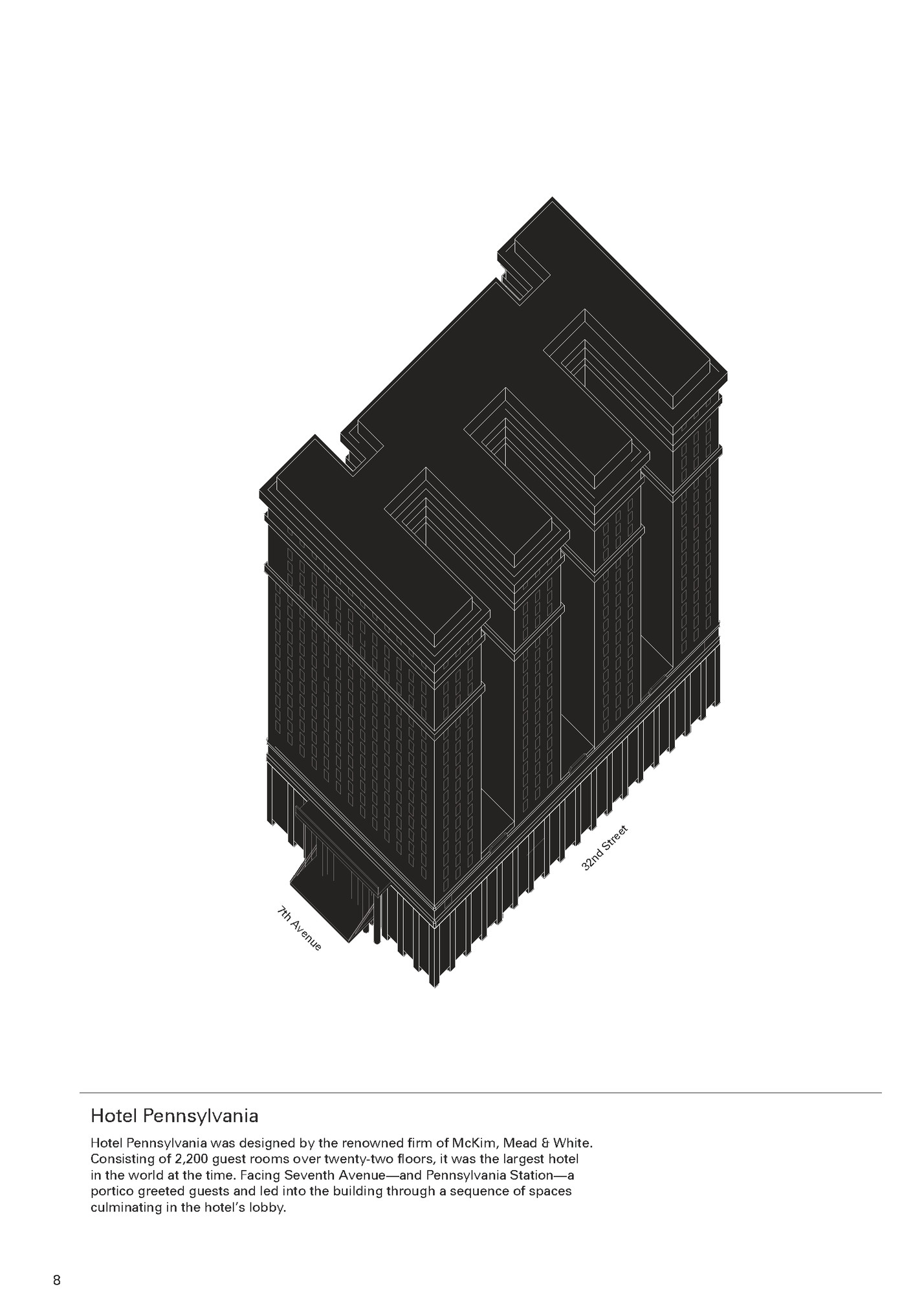
7 9 1895 1912–1960 1 2020 13 1 8 14 11 1906 1967 2 10 3 6 4 1910 1999 2030 5 12 Vornado-owned properties Proposal by Vornado Realty trust in conjunction with previous Governor Andrew Cuomo to develop 10 new buildings in the project called the “Empire station complex”. The draft plan is a comprehensive, high-density, transit-oriented redevelopment proposition that would generate the revenue needed to finally overhaul and expand Penn Station as well as other transit facilities in the area. Pennsylvania Station 1. Pennsylvania Station stood on the former Tenderloin neighborhood, a lively district from 20th to 53rd Streets, Fifth to Seventh Avenues, evolving from the adjacent theater and hotel hub. 2. In 1901, the Pennsylvania Railroad unveiled a $150 million plan to electrify and expand, connecting Pennsylvania and Long Island Railroads to Manhattan. 3. Pennsylvania Railroad tunnels span Manhattan 10 10 and link Long Island Railroad at Hunter’s Point. 4. Opened in 1910, the original Pennsylvania Station, with North River Tunnels, was a Beaux Arts masterpiece by McKim, Mead & White, spanning West 31st to West 33rd Streets. 5. During Penn Station’s planning, the Pennsylvania Railroad proposed a nearby post office on 8th avenue for the United States Post Office Department. 6. Six years after the opening of the station, PRR proposed a $9 million, 1,000-room hotel on Seventh Avenue by McKim, Mead & White: Hotel Pennsylvania. 7. On January 25, 1919, the Hotel Pennsylvania was officially dedicated. With 2,200 rooms and baths, it claimed the title of the world’s largest hotel. 8. The expansion of the Post Office Department was handled by McKim, Mead & White and occurred between 1932 and 1934. 9. In 1935, a new bus terminal opened, adding to the area’s importance as the city’s main transportation hub. 10. Madison Square Garden Corporation replaced Pennsylvania Station with a sports complex, citing benefits like tax revenues and construction boost. 11. The old structure was leveled but continued to operate underground as the Garden’s skeleton rose above. 12. The expansion of Pennsylvania station into the Farley building begins, adding three underground levels along with the redesign of the first floor. 13. Today, Pennsylvania station functions below Madison square garden sports arena and Penn Plaza. 14. Moynihan Train Hall is an expansion of Pennsylvania Station, in the former post office building, the James A. Farley Building. 15. Hotel Pennsylvania was demolished and in the now vacant plot, 15 Penn Plaza, also known as PENN15 and Vornado Tower, has been planned to be constructed by Vornado Realty Trust. 11 11
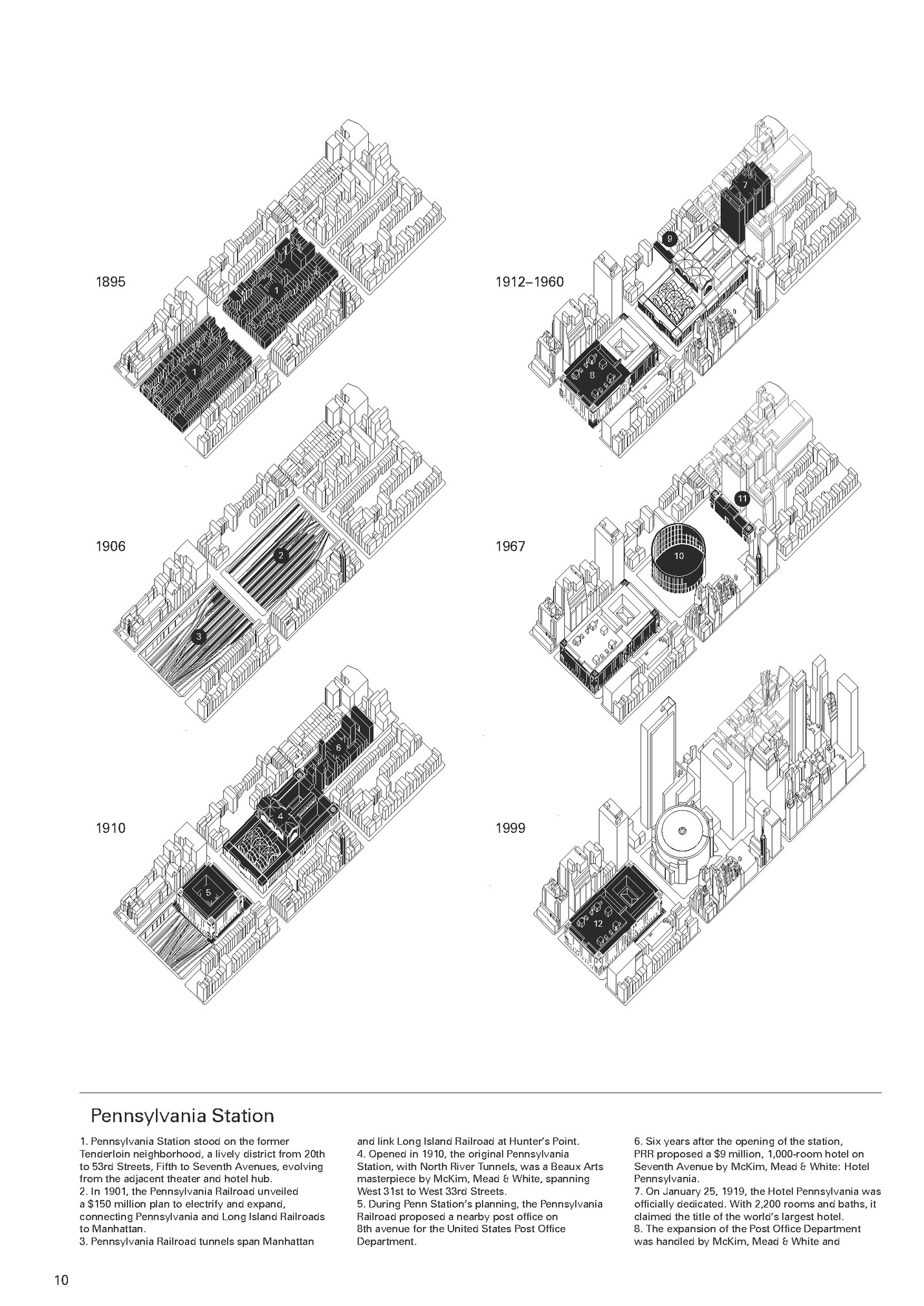
1 3 4 4 10 5 4 5 14 6 New York City Boroughs 1. Manhattan 2. Bronx 3. Queens 4. Brooklyn 5. Staten Island 13 16 17 17 9 9 4 4 7 7 3 3 11 11 2 2 8 1 12 15 15 Development of Transportation As the city expanded, the development of efficient modes of transport has allowed Development more people to cross greater distances more frequently across the densely knitof Transportation island of Manhattan. 12 12 in New York City 1. First regular ferry service starts in 1642 2. Broadway extends North in 1790s 3. First streetcar line opens in 1832 4. Railroad line to the East opens in 1850s 5. Railroad line to the North opens in 1850s 6. Railroad line to the West opens in 1850s 7. First elevated railroad opens in 1871 8. Brooklyn Bridge opens in 1883 9. Construction of Penn Station begins in 1903 10. First subway line opens in 1905 11. Hudson tunnels and Penn Station open in 1910 12. Newark Liberty Airport opens in 1928 13. Lincoln Tunnel opens in 1938 1. 1642 First regularferry service 2. 1790s Broadway extends North 3. 1832 First streetcar line opens 4. 1850s Rairload line to the East 5.1850s Rairload line to the North 6.1850s Rairload line to the West 7.1871 First elevated railroad 8.1883 Brooklyn Bridge opens 9.1903 Construction of Penn Station 10.1905 First subway line opens 11. 1910 Hudson Tunnels and Penn 12.1928 Newark Liberty Airport open 13.1938 Lincoln Tunnel opens 14.1939 La Guardia Airfield opens 15. 1948 Idlewild International Airpo 16. 1950 Port Authority Bus Termina 16.1971 Grand Central Depot opens 17. 1971 Grand Central Depot open 14. La Guardia Airfield opens in 1939 15. Idlewild International Airport -later renamed John F. Kennedy Airport- opens in 1948 16. Port Authority Bus Terminal opens in 1950 17. Grand Central Depot opens in 1971 13 13
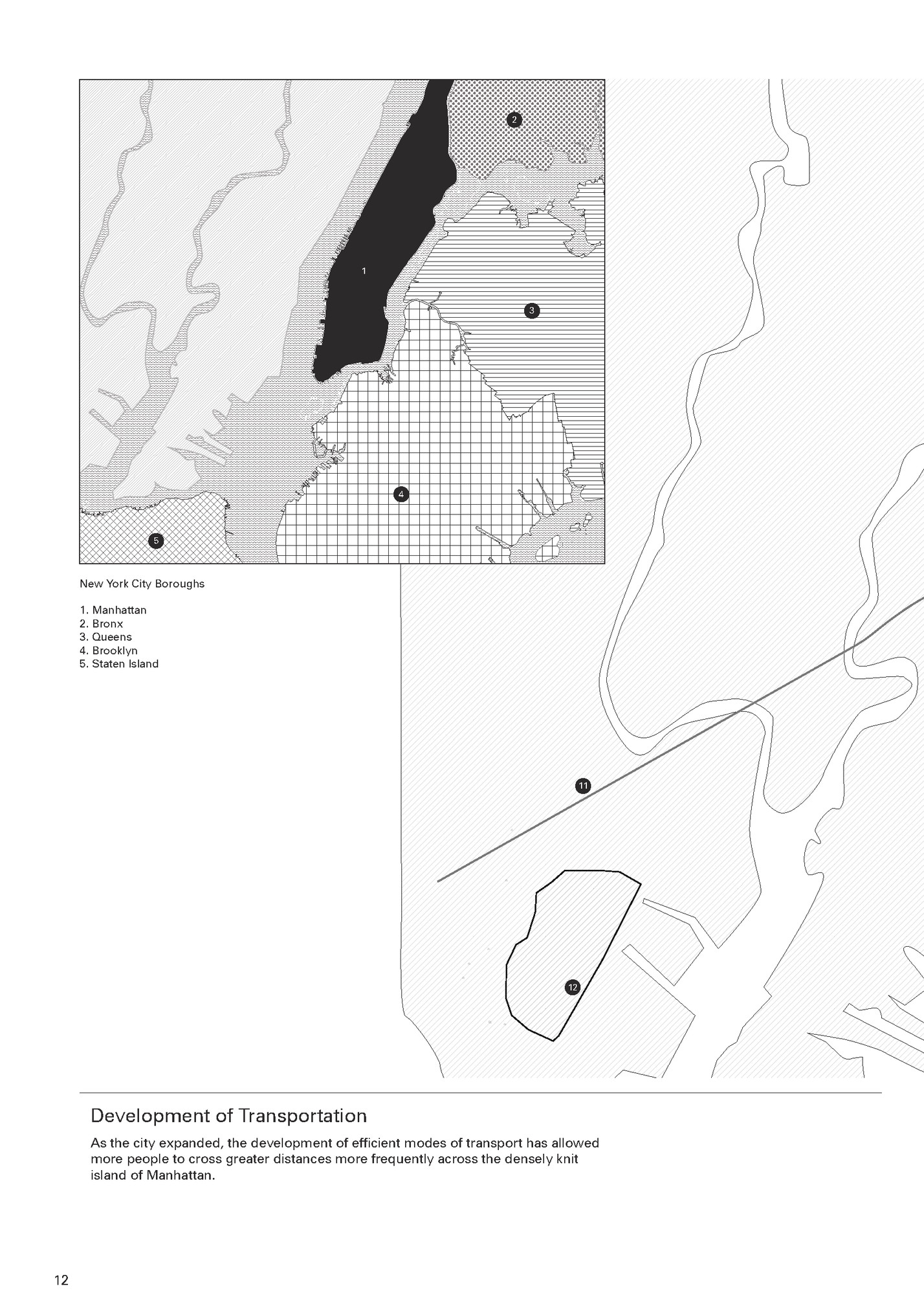
14 14 Daily Transportation Capacity of New York City Daily Transportation Capacity of New York City Elevated railway 2021 Moynihan Train Hall completed 1963 Demoli on of Penn Sta on begins 1910 Pennsylvania Station completed 1871 Grand Central Depot completed NYC: New stations & terminals (each mode of trabnsport) 1950 Port Authority Bus Terminal completed 1930 Benne Airport completed Steam-power replaces horse-power NYC's transit system officially desegregated The Commissioner's Plan is presented Broadway extends to the north NYC: policy & planning First direct rail service from New Jersey to Manhattan First subway line First elevated rapid service steam trains First streetcar line First omnibus First regular ferry service NYC: infrastructure innovation First mechanically ventilated vehicular tunnel End of WW2 F.D. Roosvelt's New Deal program NY Stock Exchange crash 1990 1980 1970 1945 1941 1933 1929 Easy rail access to 1910 Manhaan fuels suburban growth 1920 1883 1867 1865 1827 1825 1811 1790s 1693 1642 Car Railway 610,000 p/d 2040 2030 2001 9/11 B. Obama's 2009 American Recovery and 2012 Reinvestment Act 2019 Rezoning of Hudson Covid 19 2023 Yards approved 2025 The Gateway Project unveiled Bus companies in New York agree to hire black drivers Robert Moses is appointed to important commissions First gas-powered buses Erie Canal completed (Inter)national developments 12am 1am 2am 3am 4am 5am 6am 7am 8am 9am 10am 11am 12pm 1pm 2pm 3pm 4pm 5pm 6pm 7pm 8pm 9pm 12am 1am 2am 3am 4am 5am 6am 840,000 p/d Streetcar 7am 8am Rush hour 9am 10am 11am 11am Rush hour 420,000 p/h Air Rush hour Rush hour Bus Rush hour Rush hour Rush hour 860,000 p/h 510,000 p/d Bus Air 1,500,000 p/d Rush hour 4,830,000 p/d 2,810,000 p/h 90,000 p/h 1,200,000 p/d Subway 670,000 p/d Subway Rush hour 1,950,000 p/d 1,500,000 p/h Car Rush hour 1,070,000 p/d 290,000 p/h 150,000 p/h Railway 960,000 p/d 220,000 p/d Rush hour Ferry Ferry 552,000 p/d Peak Operating Hours Peak Operating Hours 15 15
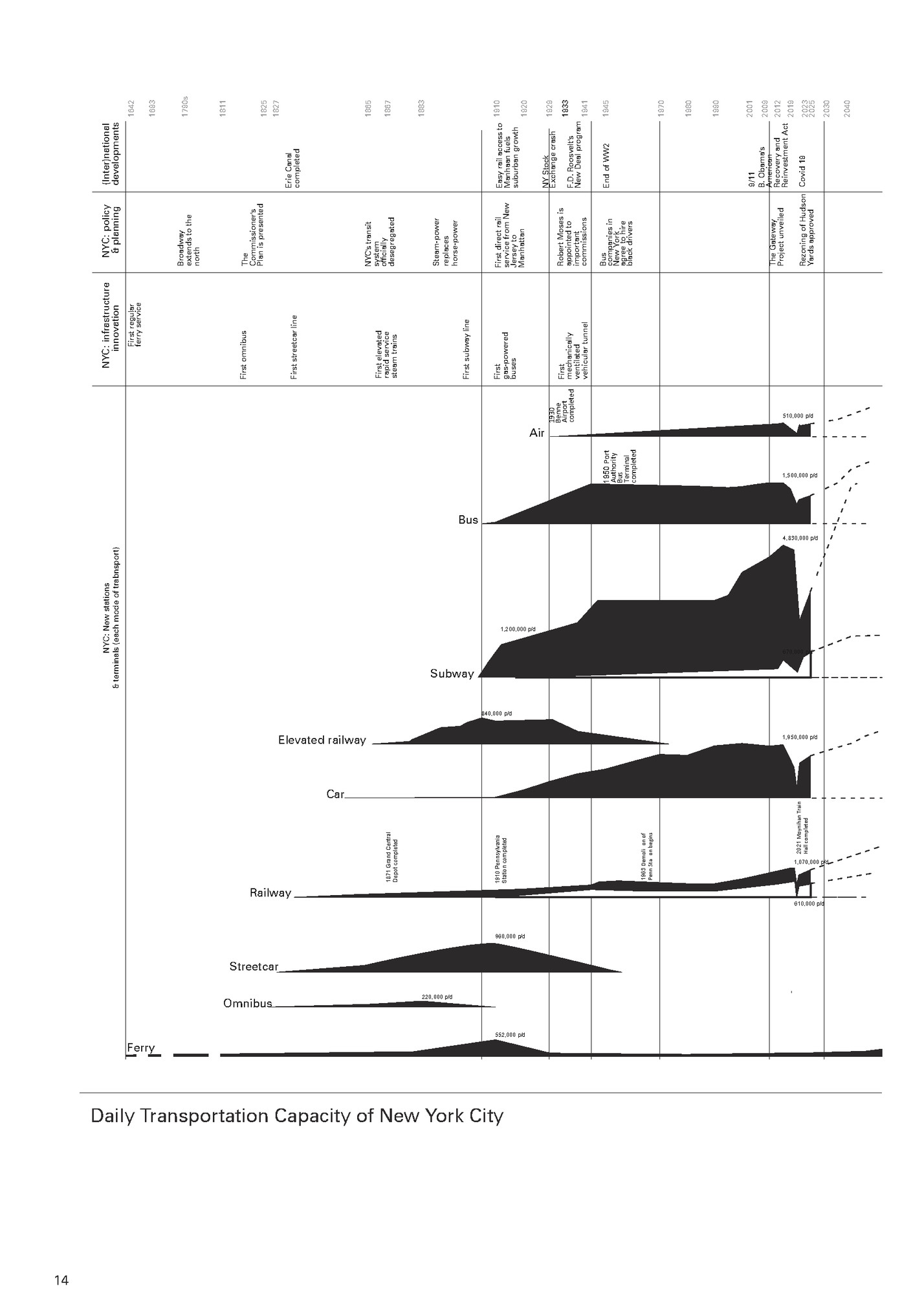
Development of Accommodation and Lodging 1990s Historically, hotels were concentrated in Midtown Manhattan where most of the 2000s city’s attractions were located. 2010s 16 16 Development of Public Housing Development of Public Housing in New York City Hotels by year of opening 1805 1850 1900 1950 2022 Around 90% of public housing developments in New York City are situated within low-income neighborhoods, with about 21% found in areas undergoing gentrification. 1000 units 500-999 units 200-299 units 100-199 units 50-99 units 20-49 units <20 units Decade 1990 2000 2010 1000 units to <20 units 17 17
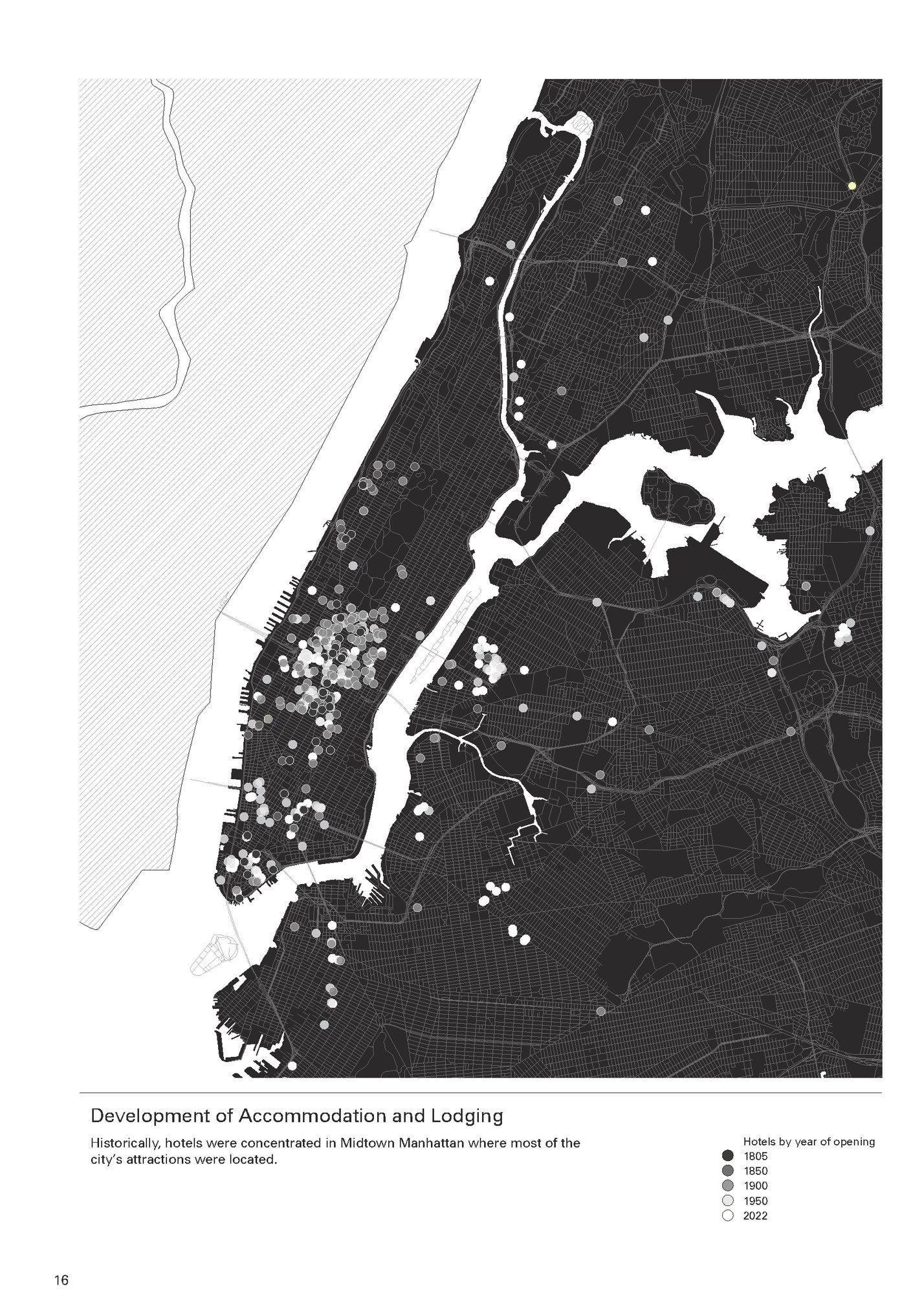
Fleepit Digital © 2021